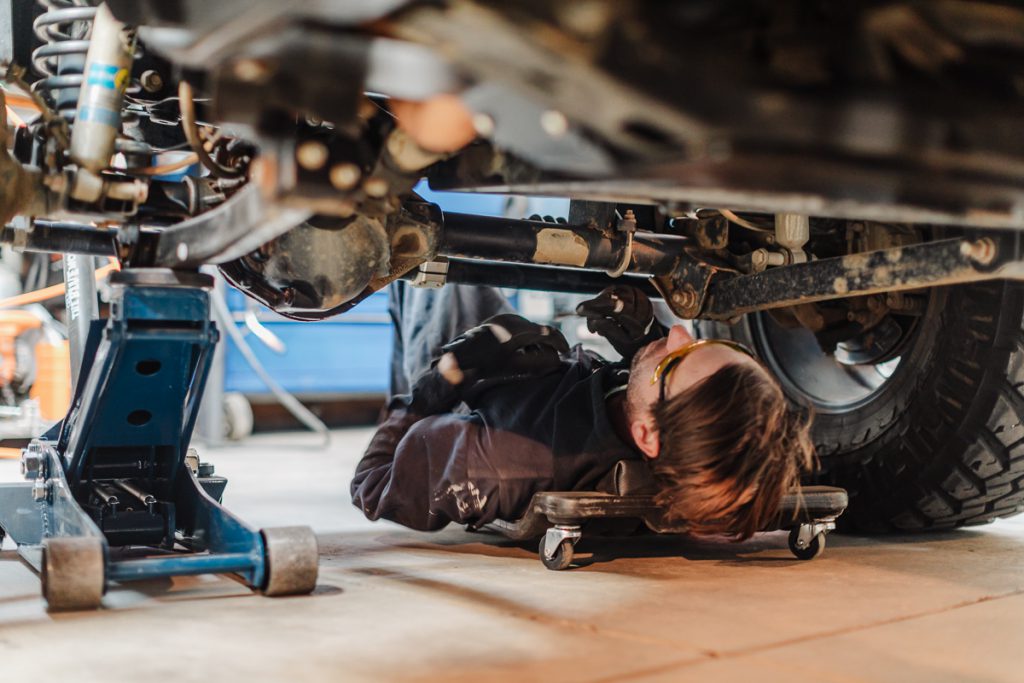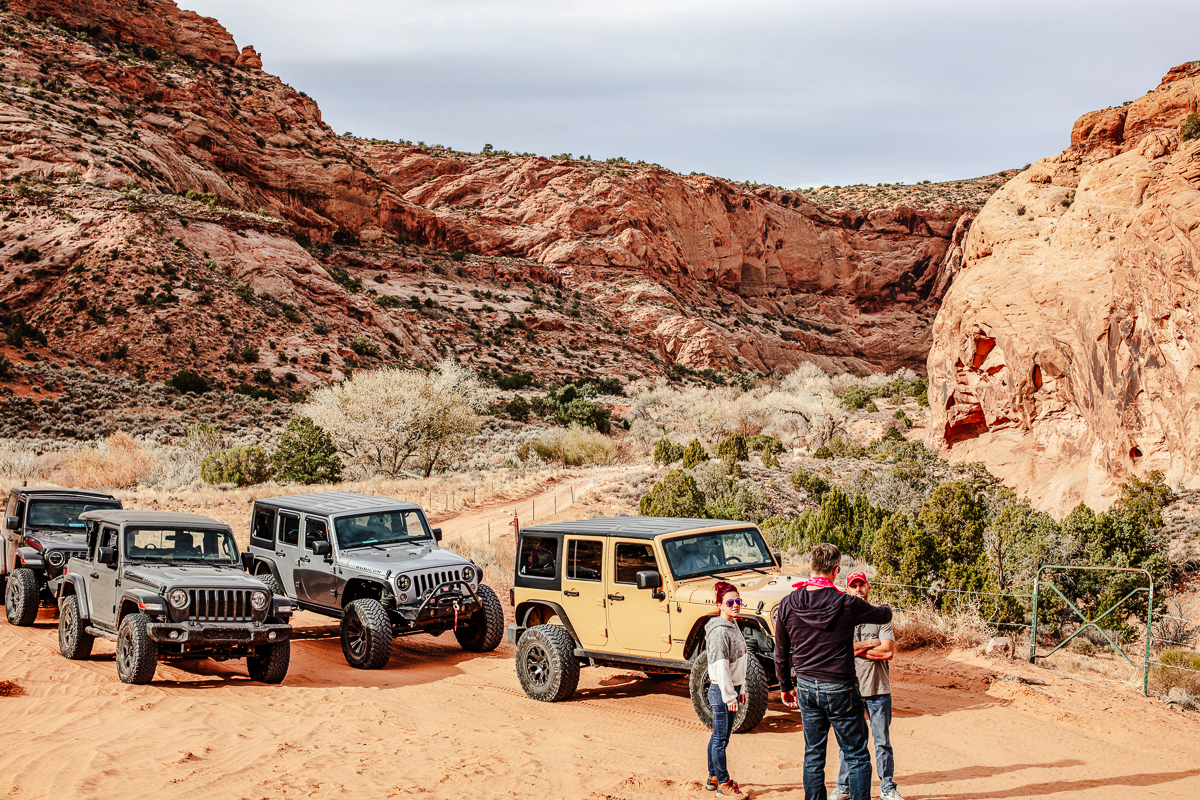Supplies to Survive Anything the Trail Throws

Eventually, every rig suffers a trail breakdown. Enough time on the trail, it’s gonna happen.
What do you take with you? The question has such a wide variety of answer because it is so dependent on situation – are you asking about day trips, overnighters, trips to middle of nowhere?
Being prepared will be key. This section will cover how to construct the best tool kit for your rig (and abilities).
Modern Jeeps are all metric, but a few standard bolts are thrown in just for fun in some older models (for example, TJs tranny and t-case are standard)!
Most aftermarket parts will be standard. And modern Jeeps seem to love Torx too. What does this mean – you get to carry a bunch of tools.
Rules of not overpacking:
- Only take tools you can use.
- Only take spare parts you can install.
One of the problems with packing tools is you immediately realize how many you potentially need. You have to boil it down to essentials only. Spend the extra money on meticulous maintenance and the confidence a ready-to-perform rig brings.
In our opinion, a decent socket and wrench set is a good “base”. It will give you standard and metric sizes, and should include deep well sockets as well. Sizes will not be large enough, so you will need to supplement with additional wrenches/sockets up to 1-1/2” and 24mm.
Add the following quality items:
- Torx bits
- Allen bits
- Drivers
- Vise-grips
- Pliers – various styles
- Wire cutters
- Socket extensions
Additionally you should carry:
- Hose Clamps – various diameters
- Hack saw
- Basic fastener kit – metric
- Tape – duct and electrical
- Funnel
- Punch set
- Hammer
- Rags
- Brake Cleaner
- Zip ties and/or stainless steel bailing wire
- Basic electrical kit – wire ends, crimper, wire, etc
- Hacksaw
- Aquaweld, Plastiweld, Metalweld
- Layered clothing, waterproof if possible
Getting Far Away
When you are truly out there and on your own, you kinda know it in your gut. These last items will help you survive if needed, so don’t forget the following if really getting away from it:
- Emergency blanket
- First Aid kit
- Way to make water safe (pump, iodine tablets)
- Food supply (backpacking meals work great as long as you have water)
- Emergency whiskey shot (can also be used as crude disinfectant)
- Knife
- Way to make fire (lighter, matches, etc)
DO NOT ever go anywhere remotely away from civilization without these. Ever. Seriously.
Be sure to try to strap down or otherwise pack to control your largest and heaviest objects. We do this by placing those directly behind the seat, which is angled back, and will provide some “trapping” action in the event of a rollover or accident on the way to/from the trail. Straps offer additional protection, and can be useful in trailside fixes.
Spare Parts
Once again – only take spare parts you can replace! If you can’t replace a front axle shaft, leave it at home.
We can’t make that list for you. Only you know:
- How good of a mechanic you are
- What you might break on trail (what your vehicles weak points are)
One part that is easily damaged and easy to replace, and can be done with your tools set are your rear lower control arms. Include this in your gear if you are taking expended trips to remote areas.
Spare fluids
Bringing spare fluids on the trail for me has always been a tough question — in order to need the fluids, the problem must be fixed, and very, very rarely is a fluid loss problem fixed (crack a diff bad enough and you can have all the fluid in the world, but it won’t help unless you fix the diff).
**Exemptions for this rule apply to any vehicle with known leaks**
Nevertheless, we carry a small supply of engine oil, brake fluid, transmission fluid, and gear oil. Additionally, and perhaps most importantly we stock oil absorbent pads, and a plastic bag specifically to prevent release of oils into nature.






